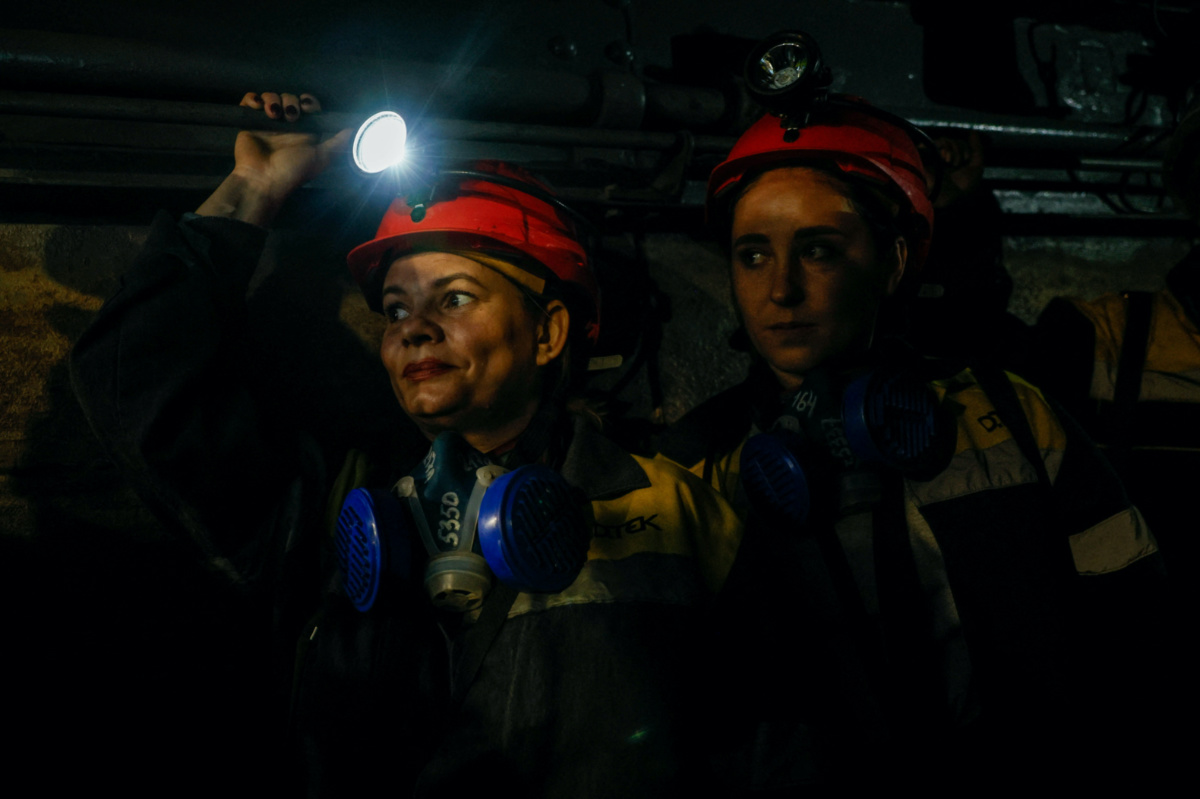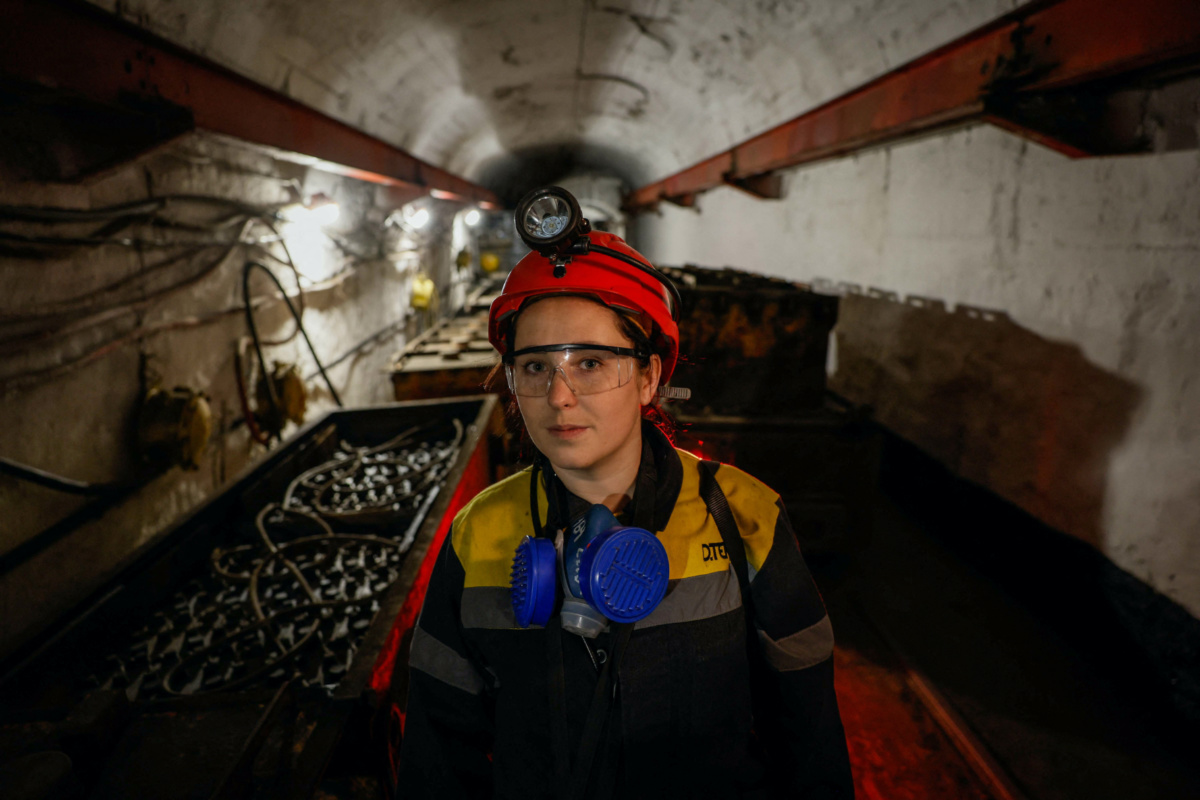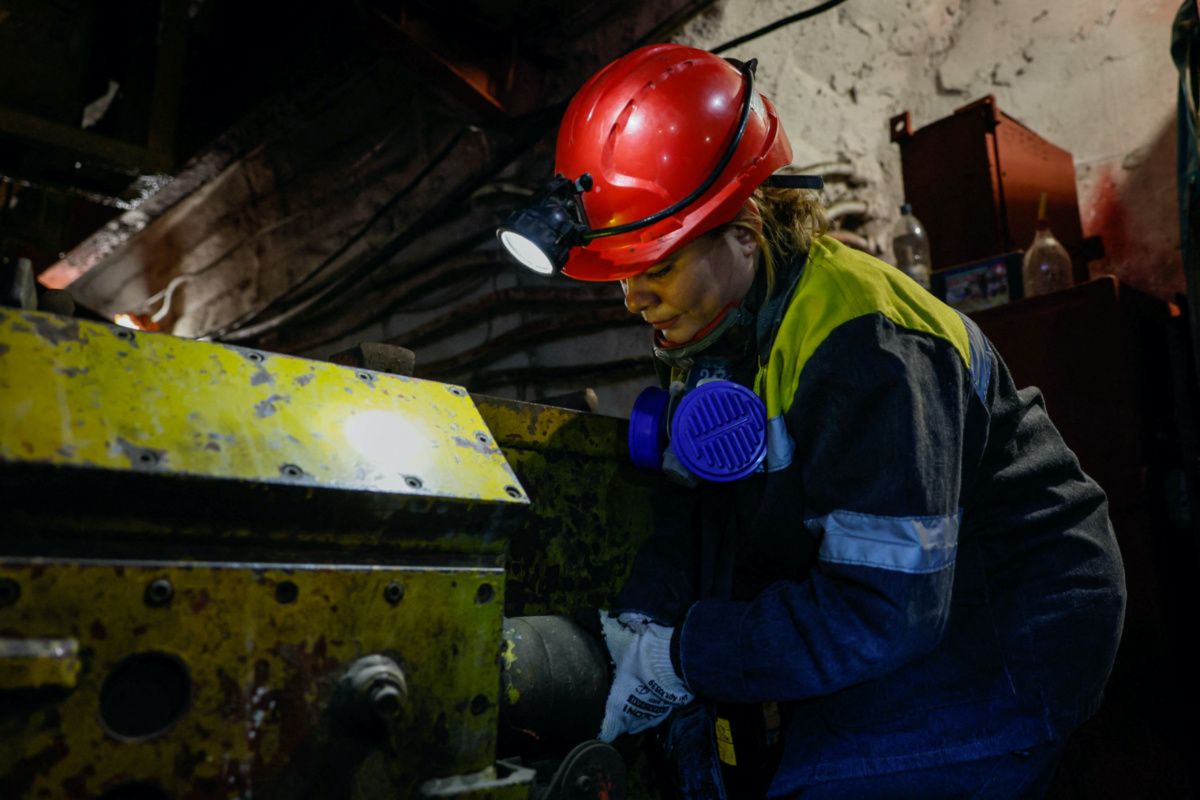Pavlohrad, Ukraine
Reuters
After more than a thousand of its workers went to fight Russia’s invasion, a coal mining enterprise in eastern Ukraine suffered a huge staff shortage. Its answer was to allow women to work underground for the first time in its history.
Over a hundred took up the offer.
“I took this job because the war started and there were no other jobs,” 22-year-old Krystyna said.

Nataliia, 43-years-old and Krystyna, 22-years-old, go down in an elevator to their underground workplace, amid Russia’s attack on Ukraine, at a mine in Dnipropetrovsk region, Ukraine, on 17th November, 2023. PICTURE: Reuters/Alina Smutko
For five months, she has worked as a technician 470 metres below ground, servicing the small electric trains that haul workers more than four kilometres from the lift shaft where they descend to the seams of coal.
The mine, a vast tower with shafts running more than 600 metres under the surface, juts out against the flat landscape and the grey November weather.
Reuters was asked by the mine’s management for security reasons not to give the exact location of the mine or use the surnames of those interviewed.
Krystyna only resolved to take the job after overcoming her fear of leaving her 4-year-old son, Denys, at home with her mother. Her hometown of Pavlohrad is 100 kilometres from the front, but is often hit by Russian missiles.
The work is interesting but difficult, she said: the battery lids are heavy and the steam can be unpleasant. The pay is good, however, and she feels a sense of duty to stay and do her bit for those who have gone to fight.
Her beloved older brother worked in the same mine. He joined the army two weeks after the start of the full-scale invasion, Krystyna said, adding that she worries greatly about him.
“Our boys were taken to the front, and now we need to support them: there is no one else to work in the mine now.”

Krystyna, 22-years-old, stands next to a mine train battery at her workplace at an underground mine, amid Russia’s attack on Ukraine, in Dnipropetrovsk region, Ukraine, on 17th November, 2023. PICTURE: Reuters/Alina Smutko
Ukraine’s coal industry, once one of the largest in Europe, has suffered decades of decline since the collapse of the Soviet Union. The centrally managed internal market that it supplied suddenly ceased to exist.
Russia-backed militias in eastern Ukraine took over many coal-rich regions in 2014. After the 2022 invasion, Russia occupied even more mines.
DTEK, the mine’s owner and Ukraine’s largest private energy company, says nearly 3,000 of its 20,000 mineworkers are fighting.
We rely on our readers to fund Sight's work - become a financial supporter today!
For more information, head to our Subscriber's page.
Of the thousand miners at this mine and its nearby twin enterprise who went to fight, 42 have been killed.
Although some women worked in the mines before the war, they were barred from doing jobs underground by the government, which considered the work too physically demanding, a policy in place since the Soviet era.
After the wartime repeal of that ban, about 400 women now work underground at DTEK’s mines – although that is only 2.5 per cent of the total subterranean workforce.

Nataliia, 43-years-old, connects power to a mine train battery charger, in her workplace at an underground mine, amid Russia’s attack on Ukraine, in Dnipropetrovsk region, Ukraine, on 17th November, 2023. PICTURE: Reuters/Alina Smutko
According to the company, women only work in auxiliary underground jobs that do not require strenuous physical labour.
“We do everything on the same level as the men — unless it’s something very heavy that we can’t lift,” said 43-year-old Natalia, who also works as a technician inspecting the trains.
She used to work in a shop selling electronics until she lost that job when Ukrainian businesses closed their doors during the initial shock of the invasion.
When Natalia decided to work in the mine, her 19-year-old son had already worked in a neighbouring mine for a year.
“Actually, I had been convincing him not to go and work there,” she recalled, but she said she was now happily working in the mine and planned to stay, even after the war.
– Additional reporting by IVAN LYYBUSH-KIRDEY






